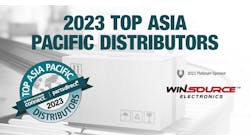Global pricing is a frequent discussion topic with many customers who have global operations, and even with some who are confined to only one region of the world but are hunting for the lowest component acquisition cost in the world. The discussion starts after a request for global pricing runs into a brick wall with component manufacturers and distributors. It is a perfectly logical request to which a negative answer, on the surface, seems perfectly illogical.
To start with, what a customer is asking for when they request a global price is the lowest price at which that component is sold for in the world. Behind that is the implied realization that the manufacturing cost for that component, should it be manufactured in multiple geographies, is likely to be different at each site. Often, parts made in low-cost regions in Asia are assumed to have the lowest manufacturing cost, so what customers frequently are asking for is the Asia price for their out-of-Asia production requirements. This is actually a good starting point for the discussion, as it acknowledges right up front that price is a function of cost. With that in mind, what the conversation quickly turns into is one about the realities of “cost.”
Just as price is a function of cost, a component cost is itself a function of other things, starting with the already mentioned manufacturing location. The obvious factor in this is differences in labor costs. Less obvious is differences in utility costs, currency conversion, regulatory costs, labor skill, and transportation costs. The location with the lowest labor costs doesn’t always enjoy the lowest relative costs for these other location-dependent elements, which is why re-shoring, or the practice of moving manufacturing out of these lowest-labor-cost areas back to the Americas, is happening. Any component manufacturer with global operations can probably talk specifically about the differences between their plants. And what all of us are experiencing first-hand is the growing impact of rising freight costs, which is a worthy stand-alone topic, so I’ll save that one for later.
Another element of cost is volume. The higher the volume a component is manufactured in, the lower the piece price. One of the advantages of the Internet is that it allows an engineer to search for and find a component with all of the ideal attributes he or she wants. The disadvantage is that the more ideal the part the engineer selects, the more chance there is that it is only going to be used by a very small group of customers. In fact, in our business the number of parts we sell that are completely unique to just one customer is much higher than one would think, given the high percentage of passive components we sell. This engineering decision can have a big impact on cost, and that too is a worthwhile topic that warrants additional attention at a later date.
The cost of raw materials, and the volumes in which they themselves are purchased, is the third major element of a component cost. The acquisition cost of a given raw material often fluctuates around the world as a function of labor and transportation costs at the site where the material is mined and/or produced. While it is true there are global commodity indexes for raw materials, what they are reflecting are price averages and they do not factor in distribution costs. This is another frequent topic of conversation with customers who believe that the price paid for a finished component should perfectly track that of the price indexes for the raw materials that go into that component. Yes, we’ve discovered a topic for yet another follow-on article.
There are two final major factors in a component’s cost as it pertains to “globalness,” both of which are business related. The first is the intercompany transfer pricing structure that the manufacturer uses when moving its parts from one region to another. One would think that within the manufacturer itself its products would move from one region to another at the same cost as what they were originally produced at. This is almost always not the case. Things like taxes, duties, freight (air versus ocean), and cost accounting rules all factor in. For example, parts made in Japan by Japanese component manufacturers are usually sold to their overseas operations, as the manufacturing site is run as a profit center. The selling organization is buying the parts from the plant at an uplift, and then, in effect, reselling them, after applying another uplift as they, too, are a profit center. The solution would seem to be to buy parts directly from the manufacturing site, which some customers are exploring, but that too has many less-than-obvious factors to be considered (yet another article topic).
The second business-related factor is current market conditions. In slow markets, component manufacturing capacity can greatly exceed demand. At such times, a given supplier is often willing to sell incremental volume at a lower price than they normally would in order to cover fixed costs and achieve some level of contribution margin. An added, hoped-for benefit of this practice during a slow time is the capture of additional market share that may, or may not, stick to the company when the market improves. This, in fact, describes the market conditions of the past seven years or so, and is the principal underlying reason behind the period-on-period component price declines that the customer base has experienced over time. But even this isn’t straightforward, as any given product category can have a range within it that is high demand while everything around it is anemic—which causes a lot of consternation with customers buying from the entire range as they get hit with conflicting pricing trends. For those interested, this is a topic that I have delved into in earlier articles.
The bottom line is that there is no common bottom line from which a global price can be built today. The closest that a component manufacturer, or even a distributor, can realistically come today is an average global cost from which a single price can be constructed, much like the above-mentioned commodities index. This isn’t the lowest price in the world, nor is it the highest, but it can meet some of the needs of those customers who must have a global price in order to normalize or standardize their finished goods pricing for their own products.
All of that said, this is a very healthy dialog to have between component customers and suppliers. Globalization is a reality, and it brings with it a host of new requirements, challenges, and opportunities. I believe that something along the lines of global pricing is inevitable, but given the many things to work through, I cannot hazard a guess as to when it will finally arrive. It seems obvious that the World Wide Web (www) will play a big role in the development of a World Wide Price (wwp), and given the speed of change that the Internet is driving in virtually everything, I think it a safe bet that before I retire my company will be quoting global pricing, of some sort, to our customers.









